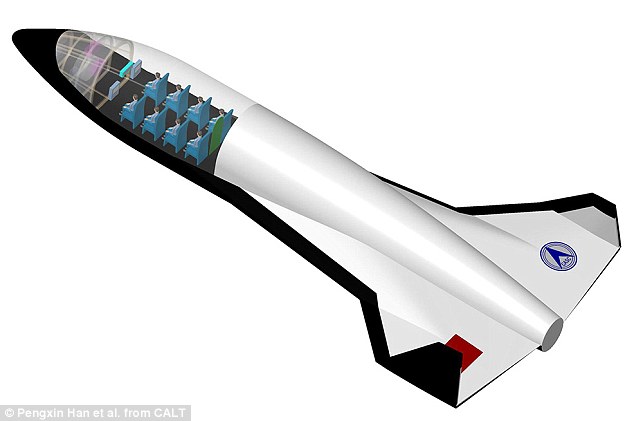China to build the world’s biggest space plane by 2020: Aircraft would take 20 tourists 80 miles above Earth
The China Academy of Launch Vehicle Technology designed the plane
It would fly above statosphere giving people 4 minutes of weightlessness
A ride could cost from $200,000 to $250,000 (£160,552 to £200,690)
The test flights will be finished in the next two years, the developers claim

This year China has been firmly establishing its place in the space race, by unveiling the world’s largest radio telescope, launching a space lab in preparation for a space station and unveiling plans to send a mission to Mars.
Now it seems the country also has its eyes on commercial spaceflight.
Designs of a new space plane, which could fly up to 20 passengers to the edge of space each day, have been revealed.
The China Academy of Launch Vehicle Technology in Beijing designed the plane, and presented its ideas at the International Astronautical Congress in Guadalajara, Mexico last month,New Scientist revealed.
China’s plane would be a vertical take-off and landing aircraft, the magazine reported.
‘The vehicle will take off vertically like a rocket and land on the runway automatically without any ground or on-board intervention,’ said team leader Han Pengxin.
The researchers presented two ideas.
The first design weighs in at 10 tonnes and has a wingspan of 19.6 feet (6 metres).
This smaller version should be able to fly five people to an altitude of 62 miles (100 km), where space officially begins, letting passengers experience two minutes of weightlessness.
The second design was for a scaled up 100-tonne version, with a 40 foot (12 metre) wingspan, could fly 20 people to 80 miles (130 km), giving four minutes of weightlessness.

据项目领队Han Pengxin介绍,目前正在研发的空天飞机有一大一小两种设计方案。
其一设计重量为10吨,翼展6米,能够将5人带入100km的高空体验约2分钟的失重。
其二设计重量100吨,翼展12米,能够将20人带到130km的太空当中,体验4分钟左右的失重环境。而这也是迄今为止世界上最大的空天飞机。
值得注意的是,中国设计的空天飞机采用垂直起落方式,无需任何地面跑道和飞行平台辅助即可以完成发射和降落过程。
Han Pengxin透露,中国空天飞机的试飞将于未来2年内进行,目前地面试验已经完成,各项系统工作正常。
Han Pengxin预计,未来乘坐中国空天飞机进行太空游的价格将在20万至15万美元之间(约合133-167万人民币)。


China’s Private Space Industry Prepares to Compete with Spacex and Blue Origin In the US, much of the recent media attention to space travel is centered on the activities of flamboyant billionaires and private companies. Left out, though, is the fact that, like in much of the rest of global business, a new generation of Chinese commercial and tourist space endeavors are looking to compete as well. One of the more intriguing of China’s emerging commercial space launch companies is Expace. Founded in February, the firm will be the lead tenant of China’s first commercial space industrial park in Wuhan,… Read more »